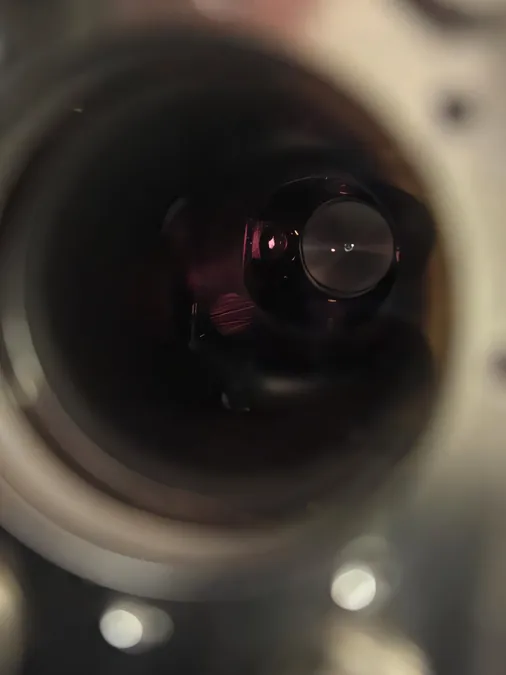
Revolutionary Quantum Thermometer Measures Temperature with Unprecedented Accuracy Using Rydberg Atoms
2025-01-23
Author: John Tan
Revolutionary Quantum Thermometer Measures Temperature with Unprecedented Accuracy Using Rydberg Atoms
In a groundbreaking advancement, scientists at the National Institute of Standards and Technology (NIST) have developed a quantum thermometer that promises to redefine how we measure temperature. Utilizing Rydberg atoms—atoms that have been energized to a size approximately 1,000 times that of their conventional counterparts—this new technology leverages the intricate principles of quantum physics to deliver astonishingly precise temperature readings.
This innovative thermometer operates without the need for traditional calibration methods, making it a game-changer in temperature measurement across various sectors, including quantum research and industrial manufacturing. According to Noah Schlossberger, a postdoctoral researcher at NIST, “We're essentially creating a thermometer that can provide accurate temperature readings without the usual calibrations that current thermometers require.”
How Does It Work?
Published in the prominent journal *Physical Review Research*, this research marks the first successful temperature measurement using Rydberg atoms. The process begins with a vacuum chamber filled with rubidium gas. Researchers cool these atoms to nearly absolute zero using lasers and magnetic fields, ensuring their motion is significantly minimized. Once immobilized, they energize the outermost electrons of these atoms, which causes them to expand dramatically.
The Rydberg atoms, with their electrons distanced significantly from the nucleus, become highly responsive to external influences like electric fields and ambient blackbody radiation—the heat emitted by other objects. As the temperature rises, so does the surrounding blackbody radiation, prompting electrons to ascend to even greater orbital heights. This relationship enables scientists to measure temperature accurately by tracking the fluctuations in these energy levels.
Applications and Future Potential
This quantum thermometer, capable of measuring temperatures from 0 to 100 degrees Celsius without direct contact with the object, holds promises beyond mere precision. It could revolutionize atomic clocks, which are sensitive to temperature changes that can introduce errors in their measurements. Chris Holloway, a research scientist at NIST, highlights the potential impact: “We're hopeful this new technology could help make our atomic clocks even more accurate, addressing an existing challenge in precision timekeeping.”
The implications for this technology extend to various high-stakes environments, such as space exploration or advanced manufacturing processes, where precise temperature readings are crucial.
As NIST continues to lead in the realm of scientific innovation, this development signifies a leap toward making temperature measurements as reliable as the fundamental constants of nature. Holloway reflects on this achievement, stating, “This method opens a door to a world where temperature measurements are as reliable as the fundamental constants of nature. It's an exciting step forward for quantum sensing technology.”
In short, this quantum thermometer exemplifies how advancements in science not only enhance our understanding of the physical world but also promise practical applications that could benefit society in countless ways. Keep an eye on this transformative technology as it pushes the boundaries of our capabilities in measurement and precision.


 Brasil (PT)
Brasil (PT)
 Canada (EN)
Canada (EN)
 Chile (ES)
Chile (ES)
 Česko (CS)
Česko (CS)
 대한민국 (KO)
대한민국 (KO)
 España (ES)
España (ES)
 France (FR)
France (FR)
 Hong Kong (EN)
Hong Kong (EN)
 Italia (IT)
Italia (IT)
 日本 (JA)
日本 (JA)
 Magyarország (HU)
Magyarország (HU)
 Norge (NO)
Norge (NO)
 Polska (PL)
Polska (PL)
 Schweiz (DE)
Schweiz (DE)
 Singapore (EN)
Singapore (EN)
 Sverige (SV)
Sverige (SV)
 Suomi (FI)
Suomi (FI)
 Türkiye (TR)
Türkiye (TR)
 الإمارات العربية المتحدة (AR)
الإمارات العربية المتحدة (AR)